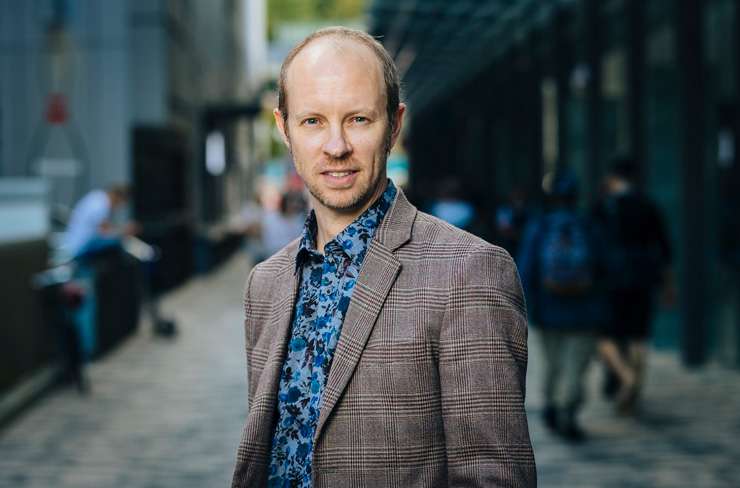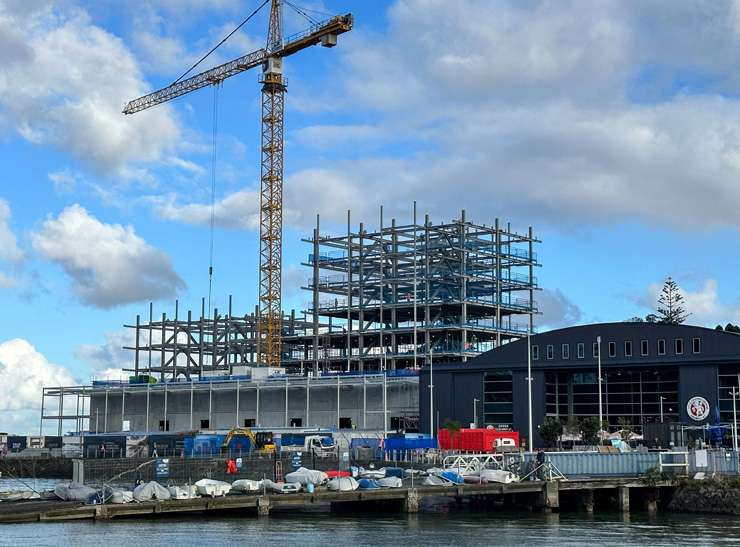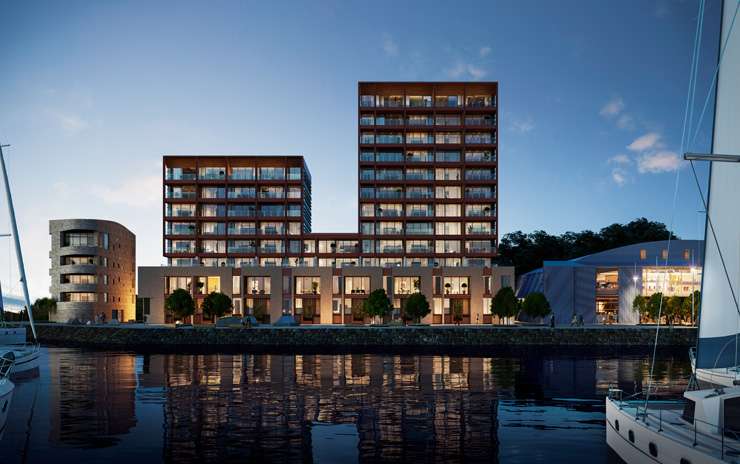A slowdown in new building activity coupled with an unprecedented turnaround in migration means the housing market is once again headed for a shortage.
But this time it is being driven by a sudden upsurge in the number of new people arriving in the country.
Analysis by the former chief economist for Auckland Council found that the number of new homes being built is no longer enough to meet the population growth.
“We were only just catching up with building we needed to get to, eating into the shortfall – just as the population starts surging again,” said David Norman, now chief economist Australia and New Zealand for engineering, design and construction company GHD.
Start your property search
Norman told OneRoof the rapid turnaround in migration from a net loss of 20,000 people to a net gain of nearly 80,000 in just 11 months would create housing shortages.
“For 100,000 people, that’s 35,000 houses. We haven’t built that in the last 11 months. Most of those immigrants will start life renting in Auckland and we’re already seeing rents up 5% to 8%.
“On the back of the storm damage, it’s an unprecedented turnaround, at speed.”
Building figures out this week from Stats NZ show that new building consents for the June quarter this year are down 20% on the same quarter last year. At just under 10,000 homes for the quarter, it was the second quarter in a row where there was a decrease.
Building consents peaked at 51,000 in the year to May 2022, but by the end of last year had already pulled back to just over 49,000 annually. And, Norman pointed out, around 25% of those consented buildings never get built as developers change their plans.
While some of the high immigration figures can be attributed to a change in how Stats New Zealand measure migration (using actual passport travel data, rather than stated intentions on an immigration card), Norman said we are back to the pre-Covid “crazy level”.
Combined with the Reserve Bank signaling no more interest rates rises and a slowing of inflation, he said it is migration that is likely to prompt an increase of house prices.
Norman said that despite the surge in building productivity (measured by the real value of buildings actually completed compared to building employment numbers), the number of new homes has not kept up – mainly due to high land prices.
Read more:
- The Auckland suburbs making a comeback – why buyers are targeting these locations
- Getta a bloomin' move on: Why homeowners could be looking to shift in coming months
- $150,000 hit to first-home buyer budgets as mortgage test rates rise above 9%
“Development has fallen because land prices have fallen – not the house values, but the underlying property value. That makes it hard to stack up for developers, when you chop up the land value, you’re not going to get that [price] for the finished product and recoup the cost.”
He sees that bargain hunters swooping to pick up cheaper property or some developers settling for smaller margins may prompt more building.
Chris Farhi, who leads the Bayleys insights, data and consulting team, said that this year’s immigration surge is similar to that of 2018 and 2019.
“It has been downplayed because the net gain is from China, India, Philippines and South Africa and with the foreign buyer ban they won’t be buying straight away,” Farhi said, adding that instead the growth puts a strain on an already tight rental market in Auckland.

David Norman: "Development has fallen because land prices have fallen." Photo / Jay Fanworth
“That will push first-home buyer and investor buying activity in the lower end of the market. When you link it with new housing supply, when developers were a bit more cautious, there is a lag in the pipeline of supply.”
June figures from the Reserve Bank bear that out: the number of first-home buyers applying for mortgages was up 30% on last June and accounted for 43% of that month’s mortgage applications, although that is still down 8% on pre-Covid levels of June 2019.
Farhi said the result is likely to be volatility in the market – that is, prices will go up.
“Immigration is the building block for the next cycle. The old one was interest rates. There are waves after waves of cycles in the theme of housing crises,” he said, adding that investors waiting on the sidelines hoping for a change of government which may bring policy changes on interest deductability are the “wildcard” at the moment.
He noted a study by Bayleys’ international partner, Knight Frank, found the same across the Tasman where immigration and population growth coupled with a drop in new home building are putting pressure on rental markets and re-shaping the housing market there.
Universal Homes chief executive Andrew Crosby said that the pipeline for new homes is stuck as a lot of developers with 20 to 40 units are not shifting their properties so, therefore, not starting new projects.
He said that now buyers think their prices are too high – prices driven by land values that rocketed through to 2021. Now some developments on suburban sites that were zoned for density are no longer economic, and are now best left as the original old house on a big section.
He added that developers now scouting for land for future projects are finding the smart sellers are hanging on to their good sites and quitting only the less desirable plots, which are harder to build on. Developers who haven’t on-sold finished projects are holding off starting a new one, while some are downsizing projects.
“Now supply is drying up, everyone is forced to slow down. You don’t know if it will be one year, or two years, or three cycle, it won’t be overnight. Boom and bust, it’s all about cycles.”
Crosby said that when developers downsize their plans to save costs – dropping a three-storey apartment to a three-storey terrace or a two-storey terrace to a townhouse – density gets less . A project in Milldale that his company is building has switched from 60 apartments to 35 bigger terrace houses.
“That’s cheaper to build than an apartment. It all comes down to price.
“You can’t build more houses if there’s no money in it. The perfect storm is being set up.”
Crosby is unsure that this year's influx of immigrants is permanent, or just a one-off post-Covid backlog after the borders opened, but agrees that new supply is drying up.
“It’s two to five years before immigrants turn into buyers. But immigration instantly hits the rental market, that’s gone off,” he said.

Construction is well under way on the Catalina Bay apartment development in Hobsonville Point, Auckland. Photo / Chris Keall

An artist's impression of the finished apartment block. Photo / Supplied
Crosby reckons that only by over-building – as was done in post-earthquake Christchurch – will the shortage of houses be sorted, but adds that the current ‘gunshot wounds’ to developers that include restricted urban boundaries, density rules, insulation standards or lengthy red tape for council consent will only delay filling the pipeline.
That pipeline is already falling behind.
Matt Baird, manager of Barfoot & Thompson’s project division, said most developers have been holding off launching new homes to the market as they wait out the market drop for the last year or so.
“New stock will be launched once we see the demand is there,” he said, with clients’ projects ranging from high-end apartments and coastal master-planned communities to apartments in Flat Bush. In his company’s portfolio, an exception is a 30-unit development in Glen Eden that is about to finish and high-end apartments on the waterfront at Catalina Bay in Hobsonville Point.
Baird said that from conception to completion, some projects can be in the pipeline for eight years, pointing to the 600-home community McLennan, between Papakura and Takanini, so big scale that developers are still working on plans even if builds are not coming out of the ground right now. Baird said his clients are picking the end of this two-year cycle for December.
“Selling off-the-plan ground to a halt, there was no demand at the prices developers needed to make the start unless they were in a position to build without presales.”
Baird said that while new immigrants would be renters first, when they come to buy, they weren’t keen to replicate the medium and high density housing they’d left behind.
“We’ll be pre-selling 1000s of mid-range suburban developments in 2024, which is our gut feeling of when confidence returns to the market,” he said, with homes ready to move into in late 2025 to early 2026.
“We’re bullish on the market. The pipeline is strong for the right product, it’s just timing. We’ve got excellent land to develop.
“I think development is in the best position it’s been in 10 years, it’s ready for the next cycle.”
- Click here to see more properties for sale in Auckland





















































































